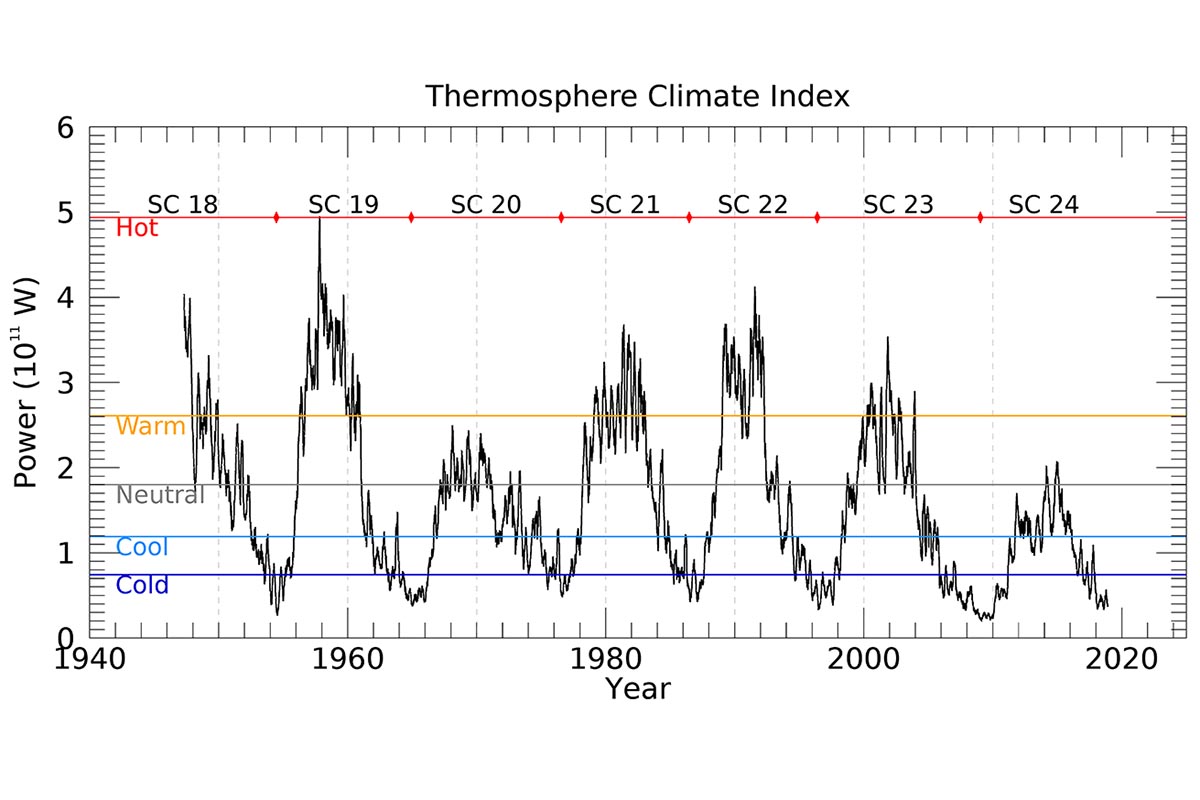The Thermosphere Climate Index calculates how much heat energy carbon dioxide and nitric oxide molecules in the thermosphere are radiating into space (and to the lower atmosphere). Based on that calculation, the TCI assigns a temperature rating — Hot, Warm, Neutral, Cool or Cold. (NASA/Linda Hunt)
Home The Thermosphere Climate Index calculates how much heat energy carbon dioxide and nitric oxide molecules in the thermosphere are radiating into space (and to the lower atmosphere). Based on that calculation, the TCI assigns a temperature rating — Hot, Warm, Neutral, Cool or Cold. (NASA/Linda Hunt) The Thermosphere Climate Index calculates how much heat energy carbon dioxide and nitric oxide molecules in the thermosphere are radiating into space (and to the lower atmosphere). Based on that calculation, the TCI assigns a temperature rating — Hot, Warm, Neutral, Cool or Cold. (NASA/Linda Hunt)



